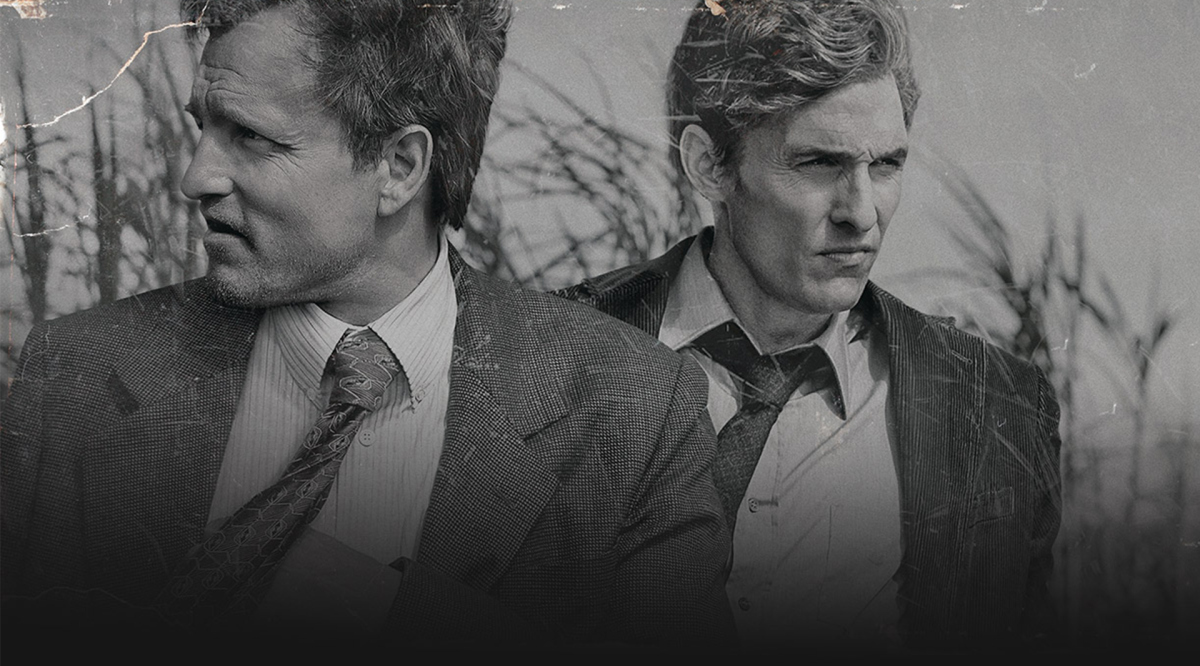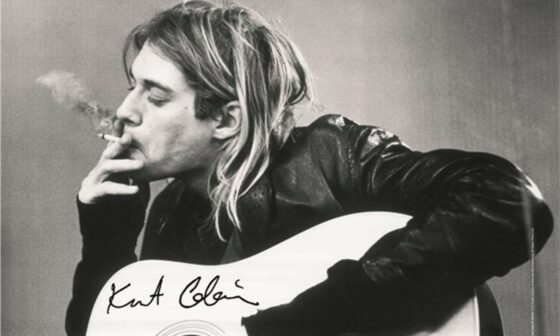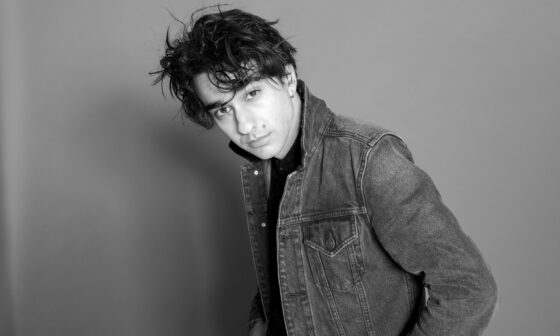HBO’s hit American television crime drama True Detective is a show that follows in the tradition of powerful network productions like The Wire, Boardwalk Empire and Game of Thrones. However, this enthralling and often disturbing series is actually closer in style to David Lynch’s Twin Peaks – 25 years having passed since the second series was cancelled – than anything else TV has had to offer in recent years.
The appeal of this murder mystery is as much down to its two main leads as it is about the investigation itself – which spans 17 years. While the whodunnit aspect is indeed intriguing, the character study of the two Louisiana CID homicide detectives tasked with solving the case – and their own individual battles with the darkness inside – is what makes True Detective so interesting.
In this feature we’ll be taking a brief look at these two complex characters and how they try to make sense of the case, while we’ll also consider some of the techniques used in True Detective from a criminal psychologist perspective. We’ll try not to give away too many spoilers for those who have not yet had the opportunity to watch this truly captivating mini-series.
Light versus Dark
Almost from the outset, viewers get an idea of how detectives Martin Hart and Rust Cohle, played by Woody Harrelson and Matthew McConaughey respectively, approach such a case. The ritualistic murder of Dora Lange and how the police find her is just the beginning of a long and arduous process in finding the person(s) responsible for this crime.
Cohle’s assessment of the crime scene is in stark contrast to that of his sceptical partner. He believes that the murder was ‘meta-psychotic’ and concluded that this killing was not the first and that it would happen again. It was the accuracy of this observation that led to both detectives being questioned about the case many years later.
The show is best summed up by Cohle’s assertion that he has come to believe there is only one story, the oldest there is: “light versus dark”.
Contrasting Characters
The backstories of Hart and Cohle is explored in greater depth than many other crime stories of this type. In fact, as the focus is on these two, you get to understand more about their thinking and how they respond to events than you would do in the usual murder mystery. This realism is highlighted by the dedication to what the characters think about life, with scenes punctuated by long, wordy exchanges between the pair.
One (Hart) is a ‘regular type dude’, a family man with his own way of dealing with stresses of the job, while the other (Cohle) is a laconic, introspective loner with nihilistic views of the world. The latter may be praised for his instincts and apparent suitability for this kind of work, but he couldn’t do it without Hart’s contacts and standing within the force. Despite working together, their contrasting personalities seem like they are programmed to clash. It is this combination that makes the show so compelling and helps to create such tension and drama.
The Many Aspects of Solving a Murder Case
As you get towards the end of the eight episode series, you realise how complex a serial murder case can be and the toll it can take on those charged with solving the crime. It becomes obvious that this case has become an obsession and true redemption can only be found in its conclusion.
Throughout True Detective many different investigative techniques are on show. From Cohle taking notes on his A4-sized ledger – which led to his nickname amongst the other cops as ‘The Taxman’ – to police interrogation to solving puzzles by looking at photos and drawings on the wall; you will see how varied the job can be and the lengths some will go to in order to get results. While many of these methods cannot be condoned, you will certainly be able to see how effective some of them can be!
The setting also plays a huge role in this particular TV show with the vast, desolate landscapes of the state and the traditions of the South’s inhabitants crucial to the plot. The two detectives, one of them an outsider from Texas, have to try and understand the culture and history of the local people as they attempt to come up with answers to everything that is going on around them.
A unique feature of the show is the interview format with much of the story recounted by Hart and Cohle in 2012 while under interrogation from detectives Papania and Gilbough, who have been assigned to a similar murder case and feel the two know more about the Dora Lange murder than they have let on.
The Study of Criminal Psychology
Top TV dramas such as True Detective are great for entertainment, but let’s not forget there are those whose job it is to study the psychology of the criminal and try to understand why these serial killers act as they do. Forensic psychologists look at many different aspects, such as criminal behaviour and the law, punishment and rehabilitation of these offenders.
#Peace.Love.TrueDetective









